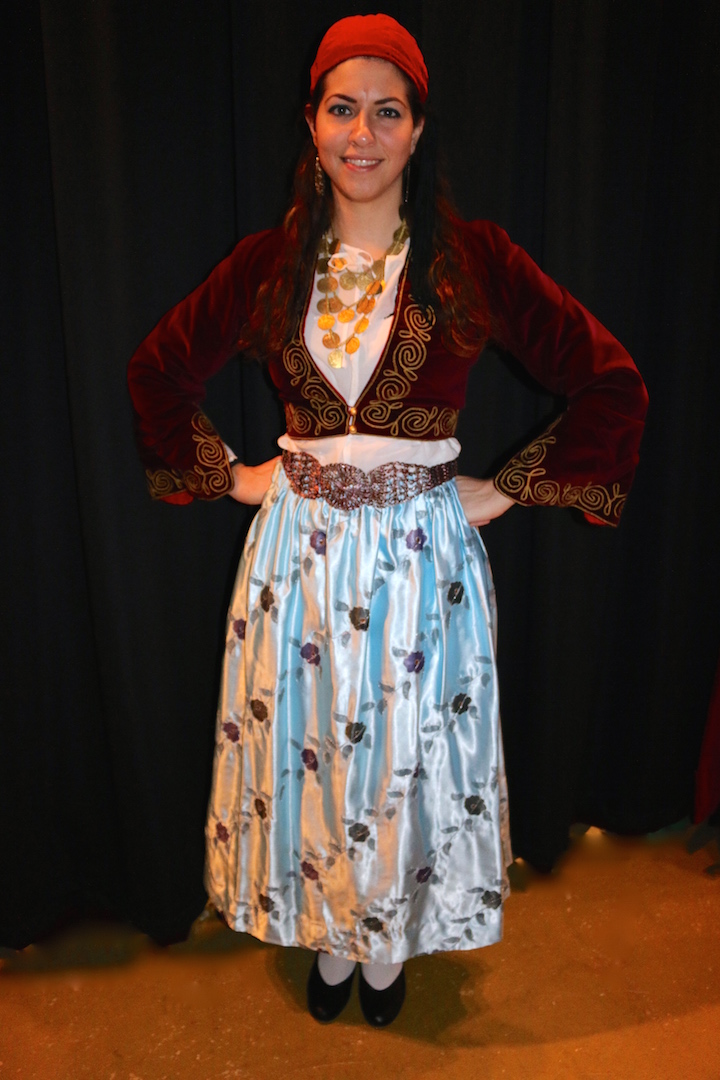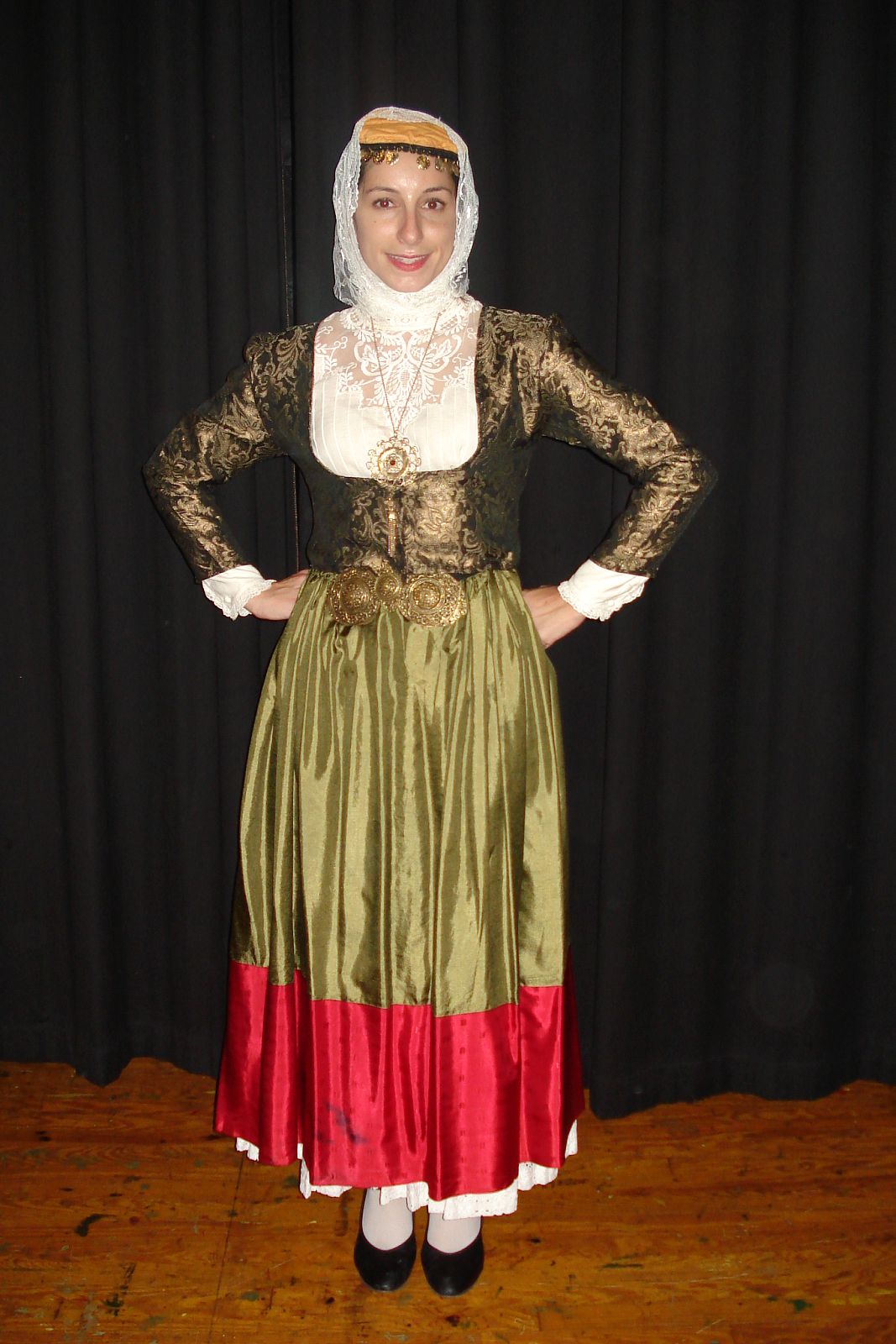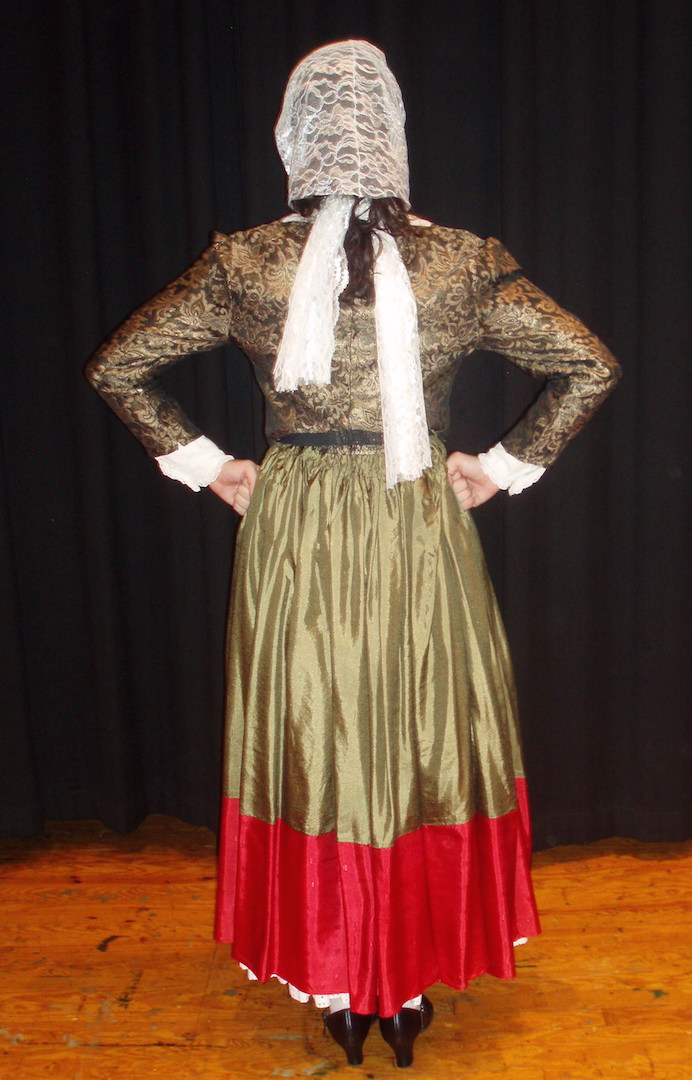
Attica
The administrative unit of Attica encompasses the entire metropolitan area of Athens, Greece’s capital, along with the cities of Piraeus and Megara and the islands of Aegina, Salamina, and Spetses.
Popular dances from Attica
Diplos (Megara), Kamakaki (Salamina), Koulouritikos (Salamina), Loulouvikos (Megara), Syrtos Tis Stratas (Megara), and To Fesaki (Salamina)
Costumes from Attica
| The first queen of Greece, Queen Amalia, played a special role in shaping the Greek costume of the early 19th century. This costumes is now called the "Amalia" and became the women's national costume. This costume symbolized freedom throughout all of the Balkans. This costume was the civil costume of the Peloponnese and was customary in Athens. The “kavadi” is the dress often woven of special materials which was slightly covered by a bodice. The bodice was open to show the neck of the fully embroidered shirt. The vest, called the “kontogouni”, is velvet and embroidered with gold. The fez (the “kalpaki”) is worn on the head. The fez was worn by married women in many ways, but it most frequently featured a large tassel (the “papazi”). The tassel was a gold braid and was adorned with pearls and sequins. The jewels were mostly European pendants, although the oldest Athenian noblewomen wore gold coins of great value. |  |
 |
||
| This is the female costume from the island of Hydra, which is one of the Saronic Islands. Many films have been filmed on Hydra due to the natural aesthetic beauty of the island. The costume of Hydra is typically composed of a white underdress and a green overdress with a red stripe. The headdress consists of a white scarf, reminiscent of a wedding veil, under which a small fez is worn. |  |
 |
||
